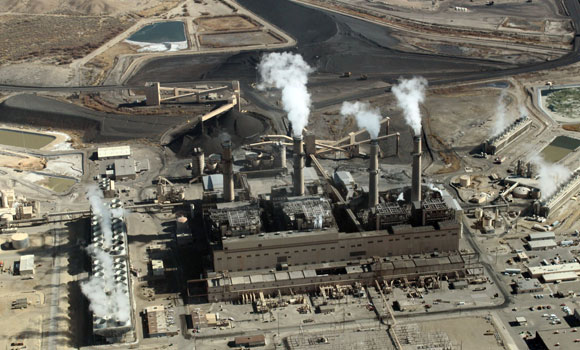Americans Angry About Power Plant Pollution
“Public Raises its Voice on Power Plant Pollution”

Proposed rules to cut pollution from the nation’s 600 coal-fired power plants are generating a heated debate in the United States.
The U.S. Environmental Protection Agency, charged with writing and implementing the plan, has already received 300,000 comments. The Agency opened its doors for public testimony this week and 1,600 people are expected to show up in Washington, DC, Denver, Atlanta and Pittsburgh.
West Virginia native Regina Hendricks told the government panel in Washington that she has seen mountaintops removed, waterways polluted and air fouled because of coal operations.
“These sites belch out mercury, selenium and poison, some of them in perpetuity,” she complained.
Fed up:
Hendricks is fed up. So are West Virginia chemist Pamela Ellis and her twin daughters, Anya and Zipporah, who joined ranks outside EPA Headquarters to support the government’s proposals to cut carbon emissions. Pamela Ellis wants to hold the polluters accountable, as do her daughters who suffer from asthma linked to the pollution.
“So it’s hard knowing that I can’t go to some places due to the emissions that are destroying our environment,” Anya said.
Her sister nodded in agreement, “Like Anya, I also have asthma and a lot of allergies. So I know personally that it’s really hard. I don’t want other kids to suffer with this in the future because we’re not taking care of our planet,” she said.
Coal-fired power plants supply nearly 40 percent of the nation’s electricity. These plants are also the largest source of carbon pollution. The EPA plan mandates a 30 percent cut in carbon emissions below 2005 levels through a broad array of actions – from energy efficiency to renewable energy options.
Transparency
Like the others who filed into EPA headquarters throughout the day, Jeff Holmstead waited patiently in a packed hearing room for his turn to testify. The former EPA official represents the Electric Reliability Coordinating Council, a trade group that opposes the proposed rule on the grounds that it would shut plants, eliminate jobs and raise electric rates. He told the panel that while he thinks it’s important to reduce greenhouse gas emissions, it’s important to be honest about what that means.
“There is no free lunch and it will increase the cost of power,” he noted. “We just need to decide as a society how much we want to pay for that.”
But it’s not just about money. Holmstead said Americans would end up sacrificing an electric system they depend on. He added that the plan would also seriously delay efforts to curb climate-changing emissions.
“So people will spend an enormous amount of time and effort trying to figure out and comment on this proposal, and at the end of the day, it is highly unlikely that it will ever be implemented,” Holmstead said.
Lawsuit
Nine states have already joined in a lawsuit to oppose the measure.
John Coequyt is a policy expert with the Sierra Club, the nation’s oldest and largest environmental group. He has heard the same arguments from industry before, only to see them proven wrong.
“Every single time that EPA proposes a pollution-reducing standard, industry comes out saying that it is going to be a problem for jobs, it’s going to be a problem for the economy,” he said. “And every single time, EPA and the states find a way to implement these standards in a common sense manner that doesn’t adversely impact the economy, that cleans up the air and saves lives. There is no reason they won’t be able to do it again this time.”
Coequyt does agree that no single rule can fix the climate problem, but suggests this plan offers the chance to take a large step in that direction.
“It also results in a fairly substantial reduction in carbon pollution that will become the centerpiece of the U.S. pledge internationally and has already allowed the administration to work with China and other countries to get them on board,” he noted.
Meanwhile, for those who could not testify in person, there was another option outside EPA headquarters, where a food truck was handing out free ice cream. Strategically located beside the truck, environmental activists with iPads in hand were helping people make the most of the wait by encouraging them to send their comments to EPA electronically.
The new rules are expected to be finalized by next June.

